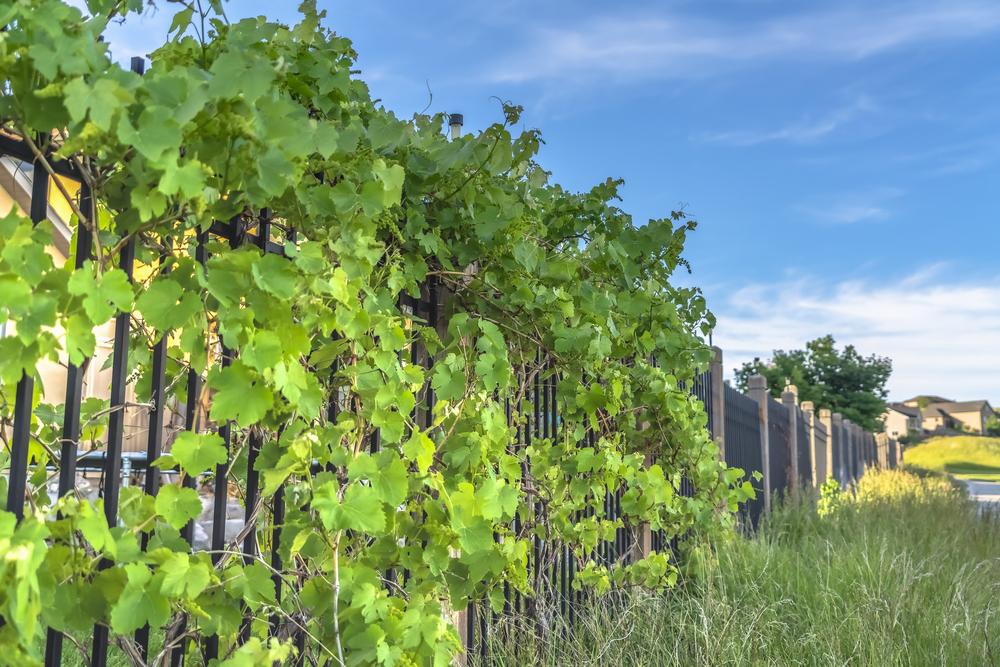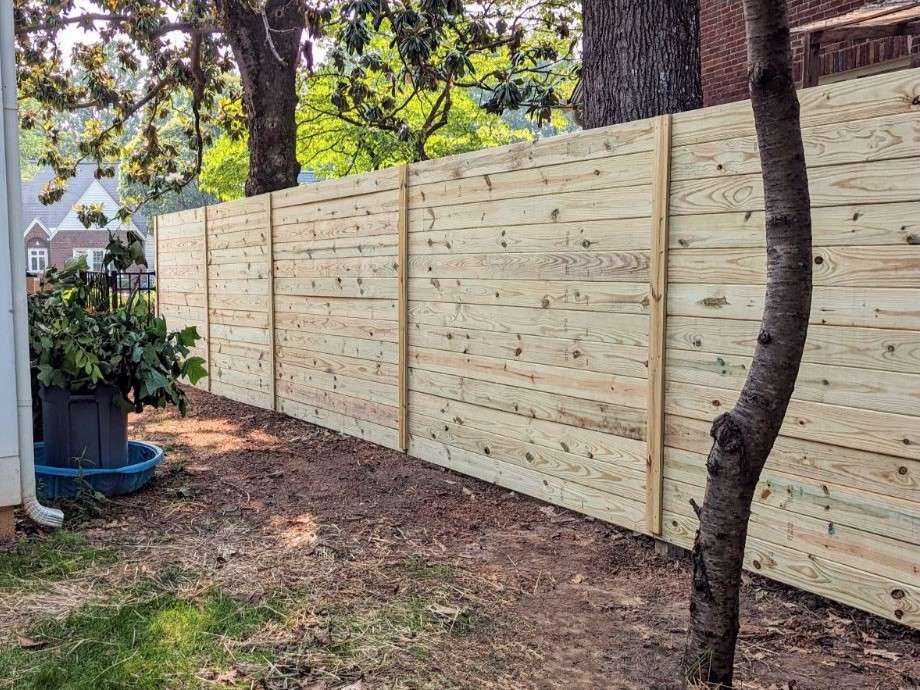All Categories
Featured
Fences play a crucial duty in providing privacy, security, and improving the visual allure of your residential or commercial property. Nonetheless, constant exposure to the components can cause tear and use. From heavy rainfall and snow to intense sunlight and wind, weather-related damages is among one of the most common reasons of fencing deterioration. While you can not manage the weather, there are numerous means to safeguard your fencing from the harmful impacts of weather and ensure it lasts for many years to come.
Wooden Fencings: While wooden fencings are a classic selection, they are highly vulnerable to dampness and pests. To make a wood fence a lot more durable, select pressure-treated lumber, cedar, or redwood. These products are more immune to rot and pests. However, you'll still need to safeguard the wood from the aspects with normal upkeep.
Plastic Fences: Vinyl fencings are highly sturdy and need little upkeep. They are resistant to fading, fracturing, and bending, making them perfect for regions that experience severe sunlight, rainfall, or winter. Plastic likewise will not rot or draw in parasites, offering long-term defense without the demand for constant upkeep.
Metal Fences: Wrought iron and light weight aluminum fencings are superb selections for their stamina and resistance to wind and dampness. Nevertheless, they are susceptible to rusting with time, specifically if exposed to frequent rainfall or humidity. Choose galvanized or powder-coated metal fences to decrease the threat of corrosion.
![]()
Composite Fences: Incorporating timber fibers and plastic, composite fences are immune to decomposing, fading, and insect damage. They supply the look of wood with less upkeep, making them a suitable choice for areas with variable climate problems.
![]()
Wooden Fencings: A good quality wood sealant or stain is crucial to safeguard your fence from the components. Be certain to reapply the covering every couple of years to keep your fence in leading problem.
Plastic Fences: While vinyl is low-maintenance, you can still secure it further by using a UV protectant. These coatings assist prevent staining brought on by long term sunlight exposure. In addition, make use of vinyl-specific cleansers to keep the surface without discolorations or dust buildup.
Metal Fences: To secure metal fencings from rust and corrosion, consider applying a rust-inhibiting guide followed by a protective paint created for outside usage. Powder layer supplies a long lasting and durable coating that can endure extreme weather. if possible.
Wood Fences: Tidy your wooden fencing with a pressure washer or a soft fabric and mild detergent. Check the fencing routinely for indicators of rot, cracks, or insect invasions.
Plastic Fences: Vinyl fences are easy to clean with soap and water. For tougher discolorations, you can utilize a moderate bleach remedy or a plastic cleaner to bring back the fencing's look. Do not neglect to check for any type of splits that may let water in, resulting in further damages.
Steel Fencings: Tidy steel fencings with a soft towel to remove corrosion, dust, and dust. If you observe corrosion spots, eliminate them right away with a cable brush and deal with the area with a rust-resistant primer or paint to stop it from spreading.
Wood Fencings: When mounting wooden fence articles, make certain they are set deeply right into the ground, ideally listed below the frost line to stop changing throughout freezing temperatures. Use concrete to secure the articles and prevent them from leaning or being rooted out by strong winds.
Steel Fencings: For metal fencings, make certain that the posts are securely secured in concrete. This is particularly vital in areas with regular storms or heavy winds. You might also want to set up added supporting to give additional support against wind stress.
Furthermore, extreme wetness from close-by plants can lead to mold and mildew and rot in wooden fences, so keep greenery at a risk-free range to permit correct air flow and water drainage.
Metal fencings should be evaluated for corrosion before the winter begins, and any affected locations should be treated with rust-resistant products. Furthermore, applying a coat of paint or protective coating prior to the cold weather embed in can help shield your fence from ice and snow damages.
![]()
Verdict. Protecting your fence from weather-related damages needs a mix of correct material selection, routine upkeep, and aggressive treatment. Whether you have a wooden, plastic, steel, or composite fence, the best protective measures can prolong its life expectancy and keep its appearance. By complying with these basic yet effective steps, you can safeguard your fencing versus the elements and maintain it looking great for several years to find.
- Pick Weather-Resistant Materials. One of the most reliable ways to safeguard your fencing is by selecting the right product for your climate. Specific materials are a lot more long lasting and better matched to stand up to specific climate condition.
Wooden Fencings: While wooden fencings are a classic selection, they are highly vulnerable to dampness and pests. To make a wood fence a lot more durable, select pressure-treated lumber, cedar, or redwood. These products are more immune to rot and pests. However, you'll still need to safeguard the wood from the aspects with normal upkeep.
Plastic Fences: Vinyl fencings are highly sturdy and need little upkeep. They are resistant to fading, fracturing, and bending, making them perfect for regions that experience severe sunlight, rainfall, or winter. Plastic likewise will not rot or draw in parasites, offering long-term defense without the demand for constant upkeep.
Metal Fences: Wrought iron and light weight aluminum fencings are superb selections for their stamina and resistance to wind and dampness. Nevertheless, they are susceptible to rusting with time, specifically if exposed to frequent rainfall or humidity. Choose galvanized or powder-coated metal fences to decrease the threat of corrosion.

Composite Fences: Incorporating timber fibers and plastic, composite fences are immune to decomposing, fading, and insect damage. They supply the look of wood with less upkeep, making them a suitable choice for areas with variable climate problems.
- Apply Safety Coatings. No matter the product, applying safety finishes is vital in expanding the life of your fence. Coatings develop a barrier that shields your fencing from moisture, UV rays, and various other environmental stressors.

Wooden Fencings: A good quality wood sealant or stain is crucial to safeguard your fence from the components. Be certain to reapply the covering every couple of years to keep your fence in leading problem.
Plastic Fences: While vinyl is low-maintenance, you can still secure it further by using a UV protectant. These coatings assist prevent staining brought on by long term sunlight exposure. In addition, make use of vinyl-specific cleansers to keep the surface without discolorations or dust buildup.
Metal Fences: To secure metal fencings from rust and corrosion, consider applying a rust-inhibiting guide followed by a protective paint created for outside usage. Powder layer supplies a long lasting and durable coating that can endure extreme weather. if possible.
- Normal Cleaning and Evaluations. Appropriate cleansing and normal inspections are important to maintaining the stability of your fence. Accumulation of dust, mold and mildew, and debris can trap dampness versus your fence and trigger long-lasting damage.
Wood Fences: Tidy your wooden fencing with a pressure washer or a soft fabric and mild detergent. Check the fencing routinely for indicators of rot, cracks, or insect invasions.
Plastic Fences: Vinyl fences are easy to clean with soap and water. For tougher discolorations, you can utilize a moderate bleach remedy or a plastic cleaner to bring back the fencing's look. Do not neglect to check for any type of splits that may let water in, resulting in further damages.
Steel Fencings: Tidy steel fencings with a soft towel to remove corrosion, dust, and dust. If you observe corrosion spots, eliminate them right away with a cable brush and deal with the area with a rust-resistant primer or paint to stop it from spreading.
- Strengthen Your Fence with Appropriate Setup. Appropriate installment is just one of one of the most effective ways to stop weather-related damages. A fence that is badly mounted is most likely to collapse or suffer damage throughout storms.
Wood Fencings: When mounting wooden fence articles, make certain they are set deeply right into the ground, ideally listed below the frost line to stop changing throughout freezing temperatures. Use concrete to secure the articles and prevent them from leaning or being rooted out by strong winds.
Steel Fencings: For metal fencings, make certain that the posts are securely secured in concrete. This is particularly vital in areas with regular storms or heavy winds. You might also want to set up added supporting to give additional support against wind stress.
- Trim Trees and Hedges Near Your Fencing. Disordered trees and bushes can trigger significant damages to your fencing, particularly during high winds or heavy storms. Tree branches can scratch versus the fence, triggering scratches, and their origins can destabilize the posts. Maintain plant life cut and ensure that tree branches are not leaning on or near the fence.
Furthermore, extreme wetness from close-by plants can lead to mold and mildew and rot in wooden fences, so keep greenery at a risk-free range to permit correct air flow and water drainage.
- Winterize Your Fencing. If you live in a location with harsh winters, take additional safety measures to shield your fence from freezing temperatures, snow, and ice. For wood fencings, ensure the base of the articles rises above ground level to prevent water accumulation, which can split the timber and ice up. Think about making use of a wetness obstacle around the base of the posts to maintain them completely dry during the cold weather.
Metal fencings should be evaluated for corrosion before the winter begins, and any affected locations should be treated with rust-resistant products. Furthermore, applying a coat of paint or protective coating prior to the cold weather embed in can help shield your fence from ice and snow damages.
- Post-Storm Fixes. Tornados can cause immediate damages to your fencing, including dropped branches, broken articles, or dislodged panels. After each storm, check your fencing extensively to check for any visible damage. Address small issues swiftly prior to they come to be bigger, much more costly repairs. It's an excellent concept to speak with a professional for repairs to guarantee it remains structurally sound. if your fencing has been badly damaged.

Verdict. Protecting your fence from weather-related damages needs a mix of correct material selection, routine upkeep, and aggressive treatment. Whether you have a wooden, plastic, steel, or composite fence, the best protective measures can prolong its life expectancy and keep its appearance. By complying with these basic yet effective steps, you can safeguard your fencing versus the elements and maintain it looking great for several years to find.
Latest Posts
Why Chicago Drivers Prefer Montclare Auto Repair for Dependable Service and Huge Savings
Published May 30, 25
1 min read
Discover Brake Repair & More: Full Services Guide from Montclare Auto Repair
Published May 29, 25
1 min read
Don’t Miss Special Auto Repair Specials in Chicago at Montclare Auto Repair
Published May 26, 25
1 min read
More
Latest Posts
Why Chicago Drivers Prefer Montclare Auto Repair for Dependable Service and Huge Savings
Published May 30, 25
1 min read
Discover Brake Repair & More: Full Services Guide from Montclare Auto Repair
Published May 29, 25
1 min read
Don’t Miss Special Auto Repair Specials in Chicago at Montclare Auto Repair
Published May 26, 25
1 min read